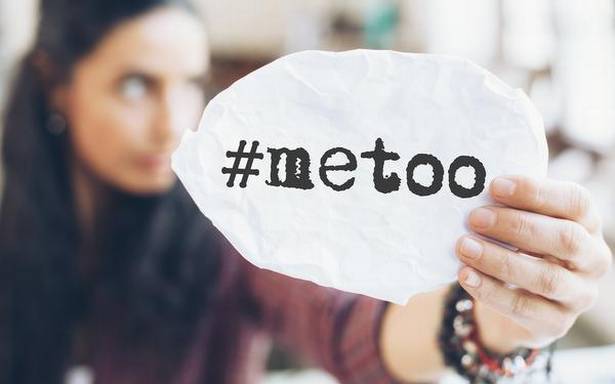Since the latest high profile sexual harassment scandal of Hollywood producer Harvey Weinstein surfaced on the media around the world, a number of women have come forward to recount their own alleged experiences with Weinstein and to comment on harassment in the media and entertainment industries, in general.
In an effort to show the enormity of the issue, actress Alyssa Milano took to Twitter with a simple suggestion: Any woman who has been sexually assaulted or harassed should reply to her tweet with the words “me too.” Her tweet received over 44,000 replies, and the phrase was quickly turned into a hashtag that spread across social media as people began sharing their own stories of sexual harassment. (www.elle.com)
While the world has achieved progress towards gender equality and women’s empowerment under the Sustainable Development Goals, women and girls continue to suffer discrimination and violence in every part of the world. Women around the world are beginning to tell their stories and expose the pervasiveness of sexual harassment in their societies. The level of tolerance for sexual harassment varies from culture to culture.
Since more women have entered the work force, their vulnerability to harassment has also increased. Often reported in the media are criminal acts of rape, assault and molestation, while the ‘less severe’ forms of harassment like verbal abuse, repeated lewd emails or texts, physical touching, or unwelcome comments on behavior, attire or body are given free reign because they do not qualify as criminal acts. The UN Convention on the Elimination of All Forms of Discrimination Against Women (CEDAW) has also noted the seriousness of this issue, and urged for “measures to protect women from sexual harassment and other forms of violence or coercion in the workplace.”
I had always thought that at the time when I started working in a factory, it was a little unusual for people to see a young woman on the shop floor, so their reactions were understandable. I was at the receiving end of some tasteless jokes and comments and it always made me uncomfortable, but I didn’t speak – I chose not to speak. Since I invaded the man’s world by choosing my profession, I had to give up my personal space in compensation. But times have changed and the men now are used to the fact that there is a woman or two in their team.
When you leave home for work in the morning, you spend at least a third of your day in an office with your colleagues, which takes up the majority of your active time. When there is a healthy level of camaraderie between colleagues, the overall environment of the workplace is positive and keeps the morale of the employees up and the spirit of teamwork alive.
Companies of today encourage more open and friendly environment than it was a decade ago and it is not an issue if female colleagues are seen at the same table for lunch as their male counterparts or sharing a joke over coffee with a male colleague. Sexual harassment of women at today’s “modern” and “educated” workplace does not happen. Really?
The “parhi likhi harassment” as one of my friends at work calls it – the kind which can neither be recorded nor reported, but you know it’s there and it bothers you. It’s that specific look, that tasteless joke, that murky comment about a coworker you are particularly friendlier with than the rest, or the triumphant smile of the guy who offers you a ride to lunch. It’s that gossip and assumptions that spread like wildfire even before they know you personally.
It takes away your peace of mind and lowers your morale. Changes you from a happy, friendly and joyful person into a closed and depressed individual who is stuck in a situation no one understands and no one thinks is a problem, and if it is a problem, it’s her fault!
The Cost of Sexual Harassment
It is no secret that sexual harassment remains widespread across professions and around the globe, especially in sectors that are predominantly male. Marginalizing and alienating 50% of the nation’s talent is a script for failure. Women who become targets of harassing, demeaning, or disrespectful workplace behavior often experience a range of negative psychological, health, and job-related outcomes. Their organizations also suffer, in the form of direct costs (employee turnover, legal fees) and indirect costs (diminished morale, damage to organizational reputation etc.).
The Top Man
Strong leadership can set the right tone for genuine gender inclusion. This includes being purposeful in creating a workplace environment where women feel they belong and are accepted as full members, and are not intentionally or inadvertently excluded, objectified, or sexualized.
Employers are responsible for the conduct of supervisors and managers as well as to protect their employees from harassment by non-employees (e.g., customers, vendors, suppliers, etc.). Managers are liable for sexual harassment between co-workers if they knew or should have known about it and took no steps to stop it. The existence of company policies and procedures alone does not automatically insulate employers from liability; they should also take action against sexual harassment once they are aware it is occurring.
Leaders, through overt actions or tacit silence, have profound influence on the organizational climate for women and men at work, and are accountable. For instance, it is infinitely more challenging to hold men in the company accountable to standards of dignity and respect when the CEO dismisses his own boasts about sexual harassment as mere restroom banter. On diversity and inclusion, leadership matters.
Sensitization and Awareness
An effective sexual harassment policy stresses the illegality of sexual harassment and delineates a clear and appropriate complaint process while ensuring the confidentiality for the victim. Additionally, such a policy encourages witnesses or victims to report the behavior immediately and mentions that retaliation against persons reporting harassment is illegal and will not be tolerated.
Having an anti-harassment policy does not mean that there will be no harassment complaints. However, having effective policy and procedures, coupled with anti-harassment training for all staff on a regular basis, will assist in preventing harassment and support individuals who are being harassed to come forward and ensure that the problem is addressed quickly and effectively.
The circulation of information, open communication and guidance is of particular importance in removing the taboo of silence which often surrounds cases of sexual harassment. Information sessions, personnel meetings, office meetings, group discussions and problem-solving groups can prove very effective in this respect. Guidelines and staff development programs on sexual harassment at work can be helpful for coping with aggression.
A lot of men are scared of what can happen if women resort to abusing this power and using the law in malicious ways, so their insecurities and apprehensions. The predominant apprehension that most men seem to have is the fact that the powers provided by the law can be used lethally by ill-willed women to destroy careers and hard-earned reputation.
However, the truth is that changing the mindset of people can minimize or eliminate misuse of anti-sexual harassment laws completely. Organization wide sensitization and awareness is the most important factor when it comes to discouraging the misuse of the sexual harassment law and the company’s sexual harassment policy.
The law aims to equip organizations to handle a workplace-related evil, not give women undue power or to put men in fear. It is true that women-friendly laws have been misused in the past, but people have become sensitive to this and they are more careful now to check the genuineness of complaints before about taking adverse action.
The Silent Bystanders and the Male Allies
When women are marginalized, disrespected, and harassed in an organization, focusing only on the top is a mistake. An exclusive focus on senior leaders as culprits causes us to miss a problem that is often far more serious and pervasive: everyday guys in the trenches who are missing in action when it comes to having the moral courage to stand up to such behavior.
It is flat-out not enough for male mentors to do their best to avoid gender stereotypes and implicit or explicit bias against women. Sorry, gentlemen, but that’s the easy part. Female colleagues, in particular the women you mentor, also need you to be boldly saying and doing something when discriminatory, disrespectful, or harassing behavior arises. And it is just as important that young men see their male mentors stepping up to confront and call out this kind of behavior.
I remember a time when I was newly married and one of my really good male friends joked with my husband that he must be a brave man to have married a woman who is so “friendly” with the guys at work. On another occasion when I was talking to one of my unmarried colleagues, one of the other guys joked that it’s high time he gets married or he’ll have to do with second-hand material. Things like these not only changed my perception about my ex-friend, but also my equation with all the people I previously enjoyed working with. These people were not the low-lives and eve-teasers on the road, they were highly educated, modern and broadminded men who were my comrades.
There is a profound distinction between passive gender inclusion (attendance at diversity and gender workshops, working to avoid harassment and bias in one’s own relationships) and active gender inclusion (demanding respect and equity for women, in both word and deed, especially when no woman is watching). It turns out that many men are abysmally inaccurate at assessing the extent to which they are active allies for women and minority groups at work.
Real male allies for women have to accept the inescapable connection between championing the careers of women and being a deliberate, public role model for other men. A man’s legitimacy as an ally to women is only fully expressed when he is an intentional exemplar and fiercely watchful of the behavior of other men. This assertion finds support in the voluminous research on the bystander effect. Social psychologists Bibb Latané and John Darley discovered that bystanders who stand idly by when others are harassed or even assaulted are not necessarily morally indifferent or sociopathic. Rather, when other bystanders are present, human beings fail to feel much personal responsibility to intervene. One powerful antidote to this effect is to observe a respected role model jumping in to help. Legitimate male allies consciously engage other men, first demonstrating respect for women and then holding other men accountable for the same.
I am not asking you to treat me like your sister, mother or daughter, just treat me like a person. Be neutral to my gender and treat me with respect that every human deserves regardless of the gender they choose to identify with.
Passive gender inclusion is cheap. It costs a man very little to give a nod to the rights of women to feel safe and respected at work, just before he looks the other way when a female colleague is being harassed or humiliated, even if he himself is not a part of it. When men get mired in the passive stage of gender inclusion, never daring to become active allies for respect and inclusion, we see a failure of both moral imagination — how a dignified and respectful workplace for women might look and how it might benefit women, men, and the organization’s bottom line — and moral courage: Physical bravery has little connection to moral courage. Moral courage is harder.
























